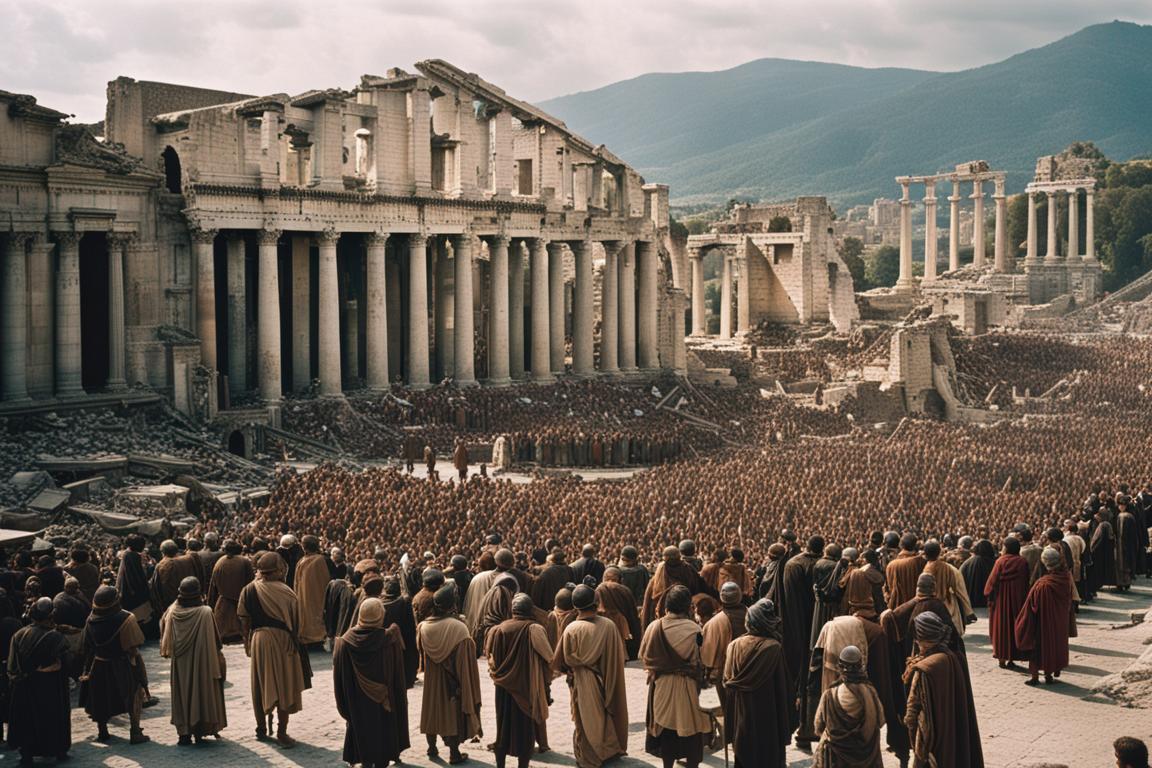Introduction: Exploring the Concept of Unconventional Building Shapes
Traditional architectural designs have long favored rectangular and cubic forms due to their straightforward structural properties and ease of construction. These shapes simplify load distribution, material use, and safety considerations, making them the default in most urban environments. However, as technology advances and design ambitions grow, architects and engineers are increasingly exploring unconventional structures that challenge traditional norms.
One such innovative concept is the donut-shaped building, also known as a toroidal structure. This design introduces a hollow center, creating a continuous ring that offers unique aesthetic and functional possibilities. The question then arises: are donut-shaped buildings feasible with current engineering methods? This inquiry combines structural physics, material science, and urban planning considerations, making it a compelling topic in modern architecture.
Table of Contents
- Fundamental Structural Principles of Building Design
- The Structural Challenges of Donut-Shaped Buildings
- Modern Engineering Technologies Enabling Complex Structures
- Case Studies of Innovative Architectural Designs
- My Sweet Town: A Modern Illustration of a Donut-Shaped Community
- Non-Obvious Factors Influencing Structural Feasibility
- Future Prospects and Innovations in Donut-Shaped Architecture
- Conclusion: Are Donut-Shaped Buildings a Feasible Reality Today?
Fundamental Structural Principles of Building Design
a. Basic physics and engineering requirements for stability and safety
At the core of any building’s feasibility are principles rooted in physics and engineering. Structures must withstand gravity, wind loads, seismic forces, and other environmental factors. The load-bearing capacity depends on material strength, structural geometry, and the distribution of forces. For example, traditional buildings utilize vertical supports, like columns, distributing weight directly to foundations, simplifying stability.
b. How shape influences load distribution and structural integrity
Shape plays a critical role in how forces are transmitted through a structure. Circular and curved forms can distribute stress more evenly than sharp angles, which is why domes and arches have been used historically for their strength. In a donut-shaped building, the toroidal geometry results in complex load paths, with forces flowing along both the inner and outer curves, requiring sophisticated analysis to ensure stability.
c. The importance of supporting safety zones during construction
During construction, safety zones—such as a buffer of at least 10 meters—are essential to protect workers and prevent accidents. These zones influence design, as they necessitate that the structure accommodates space for scaffolding, cranes, and safety barriers. For complex shapes like donuts, planning these safety buffers becomes more challenging but remains fundamental for safe construction practices.
The Structural Challenges of Donut-Shaped Buildings
a. Analyzing the load-bearing issues unique to toroidal geometries
Toroidal structures introduce unique challenges because the load paths are not straightforward. The continuous ring must support its own weight while resisting external forces, such as wind. The inner void reduces the material used in the center but creates complex stress concentrations at the ring’s cross-section. Engineers must analyze these stress points carefully, often employing advanced computational methods.
b. Material considerations and modern technological solutions
Materials like high-strength concrete, steel alloys, and composite materials are critical for such structures. Modern solutions include fiber-reinforced polymers, which provide high strength-to-weight ratios. These materials allow for thinner walls and lighter structures without compromising safety, making complex shapes more feasible.
c. Lessons from historical structures and current experimental projects
Historically, structures like Roman aqueducts and medieval stone circles demonstrate the potential of curved forms. Contemporary experiments, such as the Eden Project biosphere or the Yas Marina Circuit in Abu Dhabi, showcase how innovative engineering can realize complex geometries. These projects serve as valuable case studies, informing the feasibility of donut-shaped designs.
Modern Engineering Technologies Enabling Complex Structures
a. Advances in materials science, such as high-strength composites
The development of advanced materials like carbon-fiber composites has revolutionized structural engineering. These materials provide exceptional strength while remaining lightweight, enabling the construction of large, complex geometries like toroids without excessive foundation loads.
b. Computer-aided design (CAD) and simulation tools for structural integrity testing
Modern CAD software allows architects and engineers to model intricate shapes accurately. Coupled with finite element analysis (FEA), these tools simulate how structures respond to various forces, identifying potential failure points before construction begins. This capability is crucial for ensuring safety in unconventional designs like donut-shaped buildings.
c. The role of prefabrication and modular construction in complex designs
Prefabricated components can be manufactured off-site with precision and then assembled on-site, reducing construction time and increasing quality control. Modular approaches are especially advantageous for complex geometries, as they allow sections of the donut structure to be built and tested individually before integration.
Case Studies of Innovative Architectural Designs
a. Examples of existing structures with donut-like or unconventional shapes
- The Eden Project in Cornwall, UK – a series of geodesic domes with hexagonal and pentagonal panels forming complex curved surfaces.
- Yas Marina Circuit’s Yas Hotel in Abu Dhabi – featuring a lattice-like, curved roof resembling a fluid, organic shape.
- The London Aquatics Centre – designed with sweeping curves inspired by water movement, demonstrating how complex geometries can be achieved.
b. How these structures address safety, stability, and functionality
These projects leverage modern materials and computational design to ensure safety and stability. For instance, the Eden Project’s geodesic domes distribute stress evenly through a network of interconnected triangles, providing resilience against environmental loads. Urban planning integrates safety zones and access routes, ensuring that safety considerations are embedded from conception to completion.
c. The role of urban planning and safety zones in their construction
Careful planning of safety buffers is vital, especially for large or complex structures. These zones allow for construction equipment, emergency access, and prevent accidental damage. For donut-shaped buildings, spatial planning ensures that the hollow center and outer ring are both accessible and compliant with safety standards.
My Sweet Town: A Modern Illustration of a Donut-Shaped Community
a. Concept overview of My Sweet Town as a circular, donut-inspired neighborhood
Imagine a community designed around the principles of a donut-shaped structure: a central park or plaza surrounded by residential and commercial zones forming a continuous ring. This layout promotes walkability, social interaction, and efficient land use, while also providing natural safety buffers and green spaces within the safety zones.
b. How safety zones are integrated into community planning
In such a community, safety zones are incorporated as buffer areas between different zones—residential, commercial, and public spaces—ensuring protection from external hazards and facilitating emergency access. The design also considers recreational spaces within the safety buffers, enhancing quality of life.
c. The aesthetic appeal and psychological effects, referencing the calming influence of pink color and design choices
Color psychology suggests that the gentle hue of pink can induce calmness and reduce aggression, making it an ideal choice for communal spaces. When integrated into the architectural aesthetic, such calming colors, combined with the smooth, flowing shapes of a donut-inspired community, foster a sense of well-being and social harmony.
Non-Obvious Factors Influencing Structural Feasibility
a. The impact of construction site safety zones on design complexity
Safety zones can impose restrictions on the building footprint and access points. For complex geometries like donuts, accommodating these zones requires careful planning to ensure that construction equipment and emergency routes are effective without compromising design integrity.
b. Psychological considerations in architectural choices (e.g., calming effects, reducing aggression)
Architectural psychology highlights how shapes, colors, and spatial arrangements influence human emotions. Rounded, smooth forms like donuts can evoke feelings of safety and relaxation, which are beneficial in residential and public spaces. Incorporating such principles can enhance the acceptance and success of unconventional designs.
c. The historical evolution of tools and techniques, such as the pickaxe, in enabling complex constructions
From primitive tools like the pickaxe to modern robotic machinery, technological progress has expanded architectural possibilities. Today’s precision tools and computer modeling allow us to realize complex geometries that would have been unimaginable centuries ago, paving the way for structures like donut-shaped buildings.
Future Prospects and Innovations in Donut-Shaped Architecture
a. Emerging materials and construction methods
The future of complex structures hinges on breakthroughs in materials science, such as self-healing concrete and ultra-light composites. Additive manufacturing (3D printing) also offers potential for creating intricate components on-site, reducing costs and construction time.
b. Potential for sustainable and resilient donut-shaped structures
Incorporating renewable energy sources, green roofs, and energy-efficient systems can make donut-shaped buildings sustainable. Their circular form naturally minimizes wind resistance and heat loss, which can enhance resilience against climate challenges.
c. How technological advancements could make such designs commonplace
As computational design, novel materials, and construction automation mature, the realization of complex geometries like donuts could become routine. Urban planners and architects will be able to customize shapes for specific needs, integrating aesthetic and functional benefits seamlessly.
Conclusion: Assessing the Possibility of Donut-Shaped Buildings Today
In summary, the structural feasibility of donut-shaped buildings today depends on a combination of advanced materials, computational analysis, and innovative construction techniques. Modern engineering has already demonstrated that complex geometries can be achieved safely, as shown by experimental projects and iconic structures worldwide.
Furthermore, considerations such as safety zones and psychological impacts influence design choices but do not constitute insurmountable barriers. With ongoing technological progress, the realization of such structures is increasingly plausible. My Sweet Town exemplifies how these principles can be integrated into community planning, serving as a proof of concept for future urban developments.
<blockquote style=”margin-top: 20px; padding: 10px; background-color: #f9f9f9; border-left: 4px solid #3498db; font-style:




